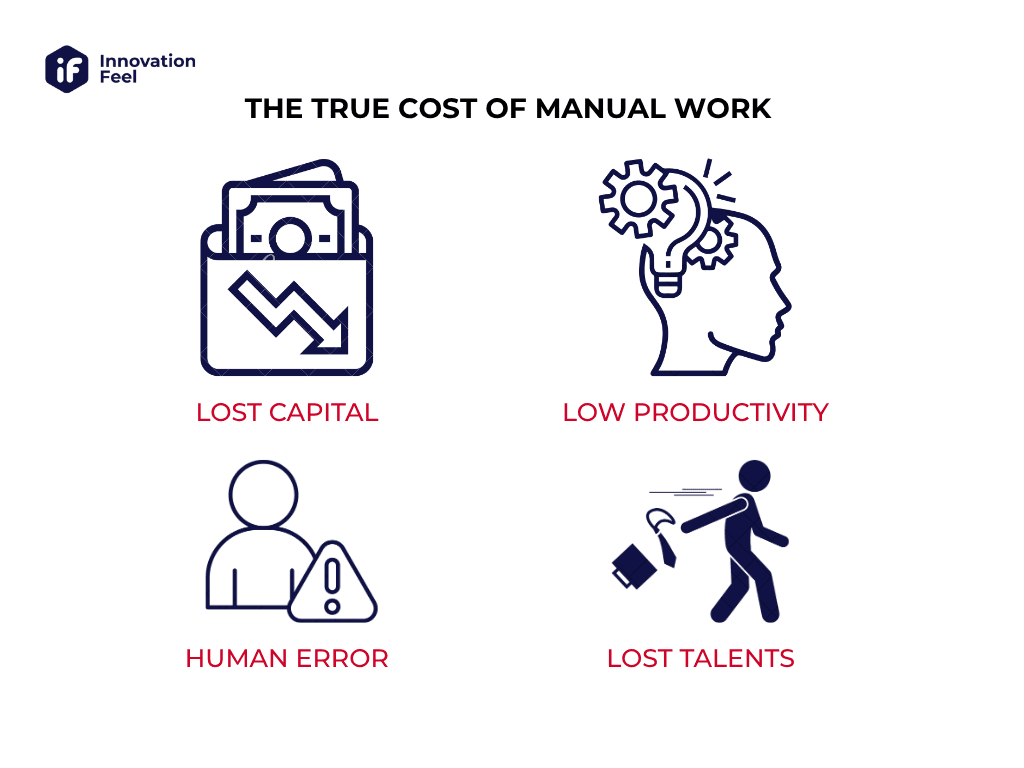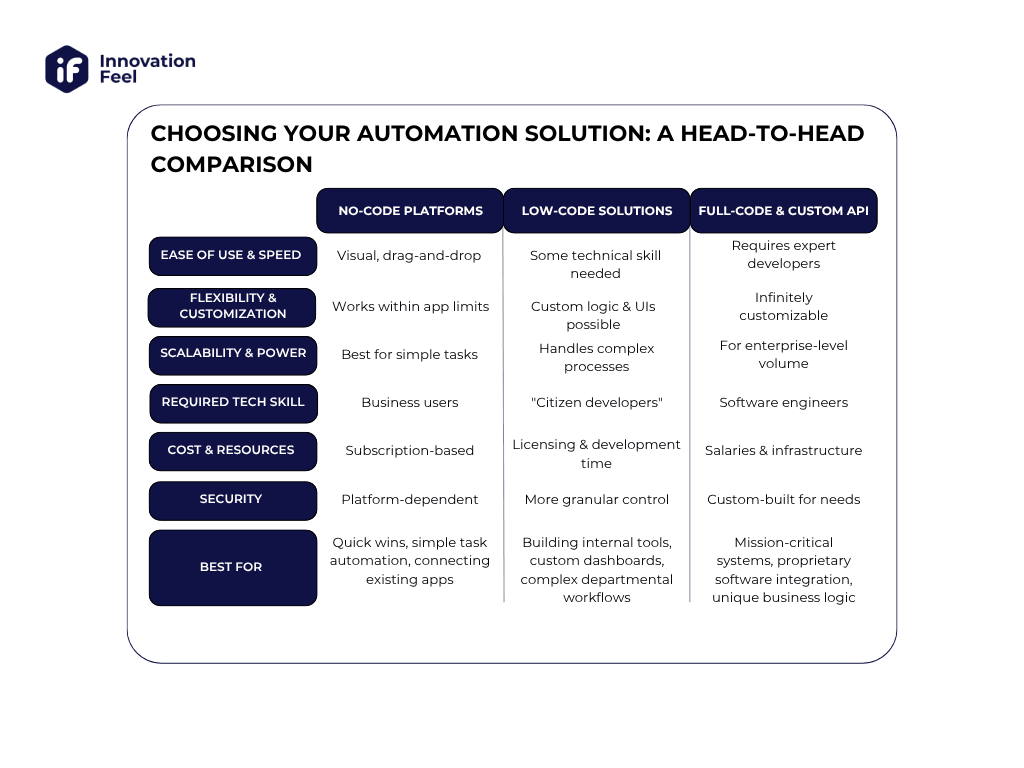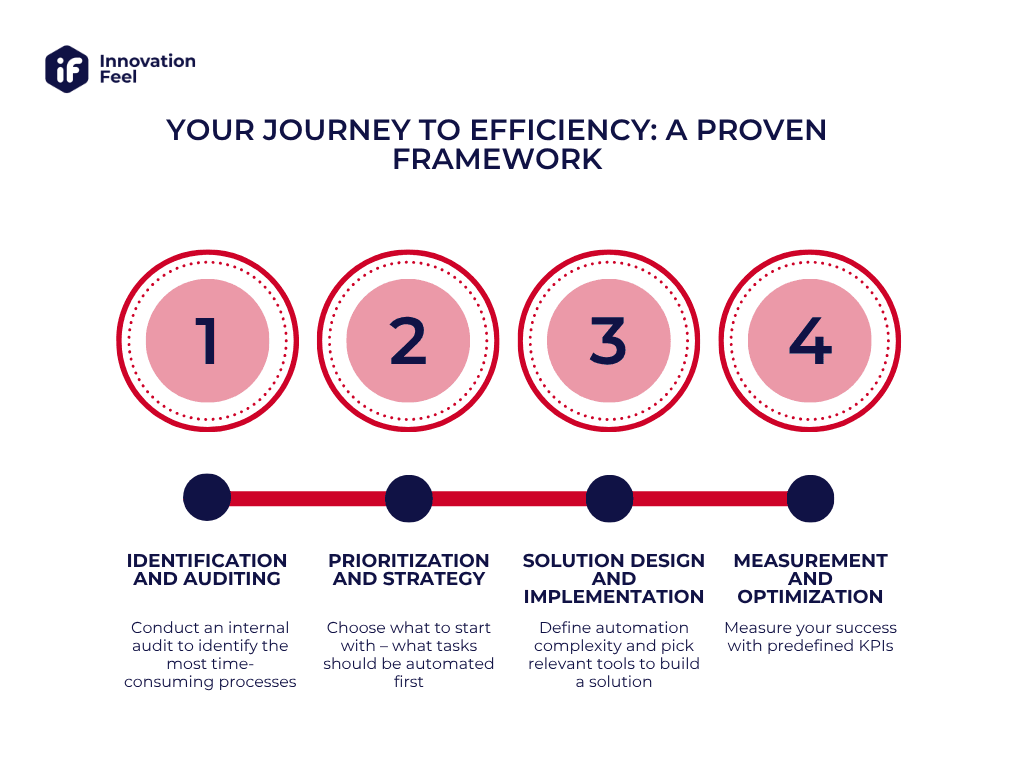Jul 03, 2025
AI,
tech
How Manual Work Holds Businesses Back and What Is Task Automation
Today, we live in an extremely competitive world, where businesses are always looking for ways to grow and succeed. To achieve these goals, they direct their resources towards developing strategic plans, exploring new markets, and searching for innovation.
But often, there’s a hidden obstacle slowing everything down – manual and repetitive work. From endless data entry and copying information to gathering reports and waiting for approvals, these tasks seem harmless. However, together they create a big, hidden cost.
Read our blog post and explore how modern automation, from no-code platforms to custom AI solutions, can help you eliminate busywork and supercharge your business performance.
The Real Cost of Busywork: It’s More Than Lost Time
Busywork does more than frustrate employees – it has a real, measurable impact on your bottom line. Research shows that over 40% of knowledge workers spend at least a quarter of their week handling repetitive manual tasks. For many, that share is even larger – with some studies revealing people lose up to 62% of their day to these recurring chores.
Here’s what that means:
- It Drains Money
On average, workers spend more than 520 hours a year performing tasks that automation could handle. You could complete these tasks quickly. That’s thousands of dollars per employee spent on low-value work. Across an entire company – or a whole economy – those lost hours may add up to trillions.
- It Hurts Productivity
We all know routine tasks can consume a lot of time that could be better used for more meaningful and creative work. A typical office employee can spend hours every week sorting documents, searching for files, or working with emails. Nearly 70% of U.S. workers spend up to 20 hours a week searching for information. These hours could be used to support digital transformation or important business goals.
- It Raises the Risk of Mistakes
Manual data entry is slow and prone to errors. On average, workers copy and paste data more than 1,000 times each week. Over a year, that adds up to over 52,000 chances to make a mistake. Sounds terrifying, right? Even a single error can lead to inaccurate reports, poor decisions, and other unpleasant outcomes.
- It Affects Talent Retention
Skilled people want to do work that really matters and drives growth, not repetitive tasks. When teams are buried under tons of manual processes, engagement drops, rising turnover in a company. In fact, 55% of employees say they’d think about quitting their job if manual work became too much, while 85% reported they were more likely to stay if their company invested in automation.

Exploring the Automation Spectrum: From Simple Tools to Complex Custom Solutions
Business process automation ranges from quick wins with no-code tools to fully tailored software built just for you and there’s no single fix that would fit everyone. The right option surely depends on your particular needs, objectives and complexity.

01. No-Code Platforms
Workflow automation tools like Zapier and Make.com help connect the applications you already use through easy interfaces that don’t require any coding skills – anything can be done by simply dragging and dropping the items you need. They are great for such tasks as moving form submissions to a spreadsheet or sending automatic updates. This is a smart first step if you’re just starting out.
02. Low-Code Solutions
For more complex needs, you might want to consider low-code platforms such as Retool or Appian. They offer more flexibility and allow you to create custom internal tools and automate your workflows without too much coding. These tools bridge the gap between simple and fully custom solutions.
03. Custom Integrations & Full-Code Development
When ready to go solutions don’t seem to work for you, custom software is your choice. For example, if you have proprietary systems, process high volumes of data, or have unique workflows, a tailored solution can automate at scale, being secure and reliable. This could mean building custom APIs and fully bespoke platforms to be a perfect match for your business operations.
A Practical 4-Step Framework for Smart Automation
To successfully add automation to your workflows, you need to plan carefully. This will help your business thrive. Therefore, having a clear, well-structured approach is essential.

Step 1: Identify and Audit
Start with an honest close look inside your workflows. Which tasks take the most time? Where are the biggest bottlenecks? Which processes disencourage your employees or create frequent errors? Calculate how much time and money you spend – this will help you decide if it’s time for change.
Step 2: Prioritize and Plan
Trying to automate everything at once can be overwhelming and not that necessary. You can focus on quick yet effective solutions first, like connecting a website form directly to your CRM. Prioritizing the most significant pain points ensures quick results and adds motivation for bigger projects.
Step 3: Design and Implement
Once you know what to tackle first, it’s time to choose the right solution on the “automation spectrum.” Is a simple no-code tool enough? Or do you need a robust, custom-built system? Make sure implementation meets all your requirements. It also has to be smooth, secure, and well documented.
Step 4: Measure and Improve
Remember what goals you’ve set when starting this journey and keep track of your progress with clear KPIs. Are you saving the time you expected? Are mistakes happening less often? Use these insights to improve your setup and spot new opportunities to automate even more.
Summing up…
Relying on your team to handle repetitive manual work has become a real growth blocker. You can give your people the freedom they need to focus on meaningful activities instead. More than 70% of workers say they’d use time saved by automation for creative, strategic tasks that have a high impact and add more value to their company. By building efficiency right into your operations, you’re creating a resilient, innovative business by design – ready to scale and thrive.
Want to make busywork easier and see the magic of automation? You don't have to deal with it alone.
Connect with Innovation Feel, and we’ll help you create the automations you’ve been dreaming about for so long. Our team of experts specializes in web and mobile development and creating AI automation solutions that deliver real results.
Contact us today for a complimentary consultation, and let's design the automation strategy that will fuel your growth.